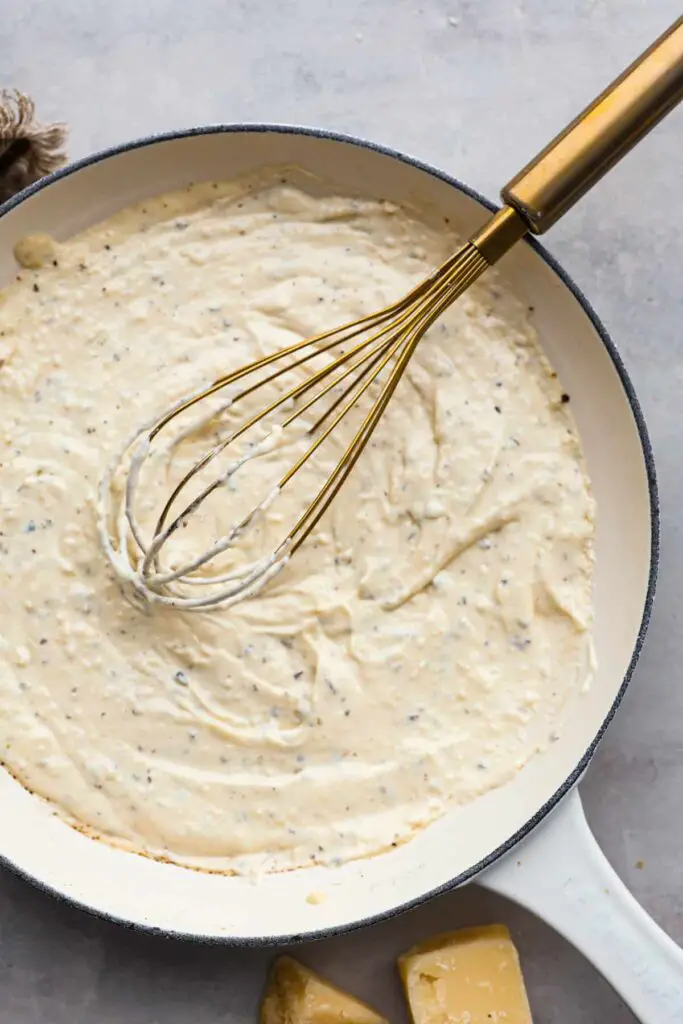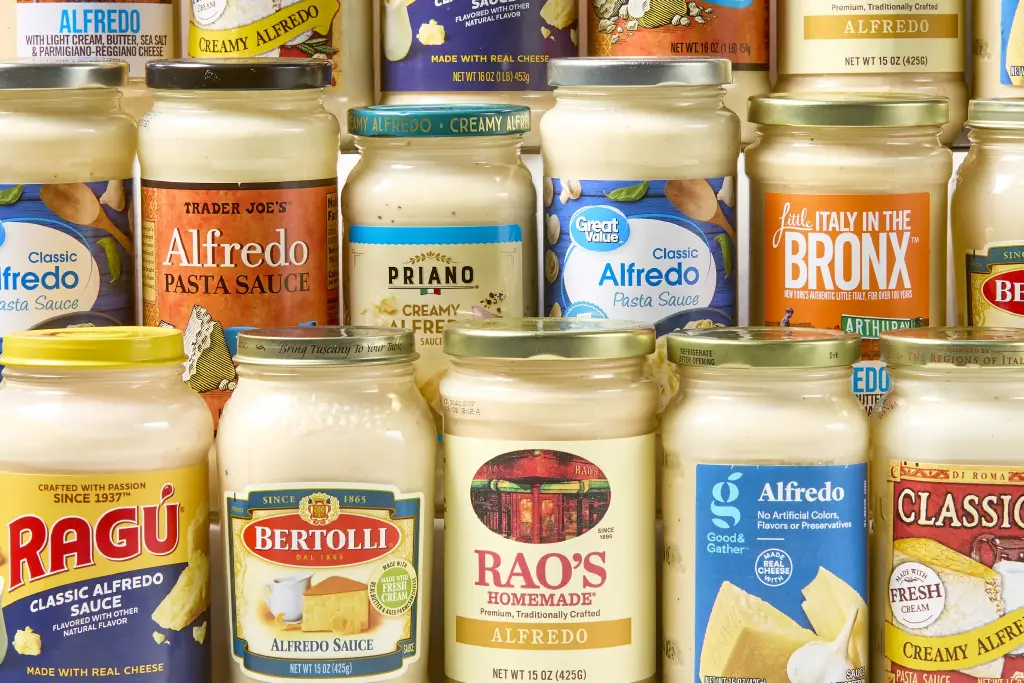Should You Thaw Frozen Alfredo Pasta Before Reheating?

Have you ever wondered whether you should thaw frozen Alfredo pasta before reheating it? Picture this: you’re craving a comforting plate of creamy Alfredo pasta, but it’s frozen solid. Should you wait for it to thaw or pop it straight into the oven or microwave? This common dilemma can affect the taste, texture, and overall enjoyment of your meal.
In this article, we’ll delve into the debate of whether you should thaw frozen Alfredo pasta before reheating and explore the best methods to ensure your pasta turns out perfectly warm and delicious. Understanding the right approach can save you time, preserve the flavors, and make your dining experience more enjoyable.
Understanding the Basics of Freezing Alfredo Pasta

Before delving into the reheating process, it’s essential to understand how freezing affects Alfredo pasta. Freezing preserves the pasta and sauce by slowing down the activity of bacteria and enzymes that cause spoilage. However, the texture and consistency of both the pasta and the sauce can change during the freezing and thawing process.
Key Factors to Consider:
- Sauce Separation: Alfredo sauce, made from cream, butter, and cheese, can separate when frozen. The water content may form ice crystals, causing the sauce to split.
- Pasta Texture: Pasta tends to become mushy if not reheated properly, as the freezing process breaks down the starches.
- Flavor Retention: While freezing helps retain the overall flavor, some nuances of the fresh dish may be lost.
Should You Thaw Frozen Alfredo Pasta Before Reheating?
The decision to thaw frozen Alfredo pasta before reheating depends on several factors, including time, convenience, and desired texture. Let’s explore the pros and cons of both methods.
Reheating Directly from Frozen
Pros:
- Convenience: Reheating from frozen saves time, making it a quick option for busy days.
- Safety: Reduces the risk of bacterial growth since the pasta remains frozen until reheating.
Cons:
- Texture: Direct reheating can result in uneven heating, leading to mushy pasta or cold spots.
- Sauce Separation: The sauce may not re-emulsify properly, affecting the creamy consistency.
How to Reheat Directly from Frozen:
- Oven Method:
- Preheat your oven to 350°F (175°C).
- Place the frozen Alfredo pasta in an oven-safe dish.
- Cover with aluminum foil to retain moisture.
- Bake for 30-40 minutes, stirring halfway through to ensure even heating.
- Stovetop Method:
- Place the frozen pasta in a large skillet or saucepan.
- Add a splash of milk or cream to help re-emulsify the sauce.
- Heat over medium-low, stirring frequently until the pasta is heated through.
- Microwave Method:
- Transfer the frozen pasta to a microwave-safe dish.
- Cover with a microwave-safe lid or plastic wrap, leaving a small vent.
- Heat on medium power in 2-minute intervals, stirring between each interval, until thoroughly heated.
Thawing Before Reheating
Pros:
- Even Heating: Thawing ensures more consistent reheating, reducing the risk of cold spots.
- Better Texture: The pasta is less likely to become mushy, and the sauce can re-emulsify more effectively.
Cons:
- Time-Consuming: Requires planning ahead, as thawing takes additional time.
- Potential for Bacterial Growth: Improper thawing can lead to bacterial growth, especially if left at room temperature.
How to Thaw Properly:
- Refrigerator Thawing:
- Place the frozen pasta in the refrigerator and let it thaw overnight or for about 8-12 hours.
- This method ensures a slow, safe thaw without compromising food safety.
- Cold Water Thawing:
- Submerge the sealed container or bag of frozen pasta in cold water.
- Change the water every 30 minutes to maintain a safe temperature.
- The pasta should thaw in 1-2 hours, depending on the portion size.
Tips for Reheating Alfredo Pasta

Regardless of whether you choose to thaw the pasta first or reheat it directly from frozen, these tips can help you achieve the best results:
- Add Moisture: Adding a splash of milk, cream, or broth can help maintain the sauce’s creamy consistency and prevent the pasta from drying out.
- Stir Frequently: Stirring during reheating ensures even distribution of heat and helps reincorporate separated sauce.
- Use Lower Heat: Reheating at a lower temperature helps preserve the pasta’s texture and prevents overcooking.
- Cover the Dish: Covering the dish while reheating retains moisture, preventing the pasta from drying out.
Table: Comparison of Reheating Methods
| Method | Time Required | Pros | Cons |
| Oven | 30-40 minutes | Even heating, retains moisture | Time-consuming |
| Stovetop | 15-20 minutes | Quick, allows sauce adjustment | Requires constant stirring |
| Microwave | 5-10 minutes | Fast, convenient | Uneven heating, risk of drying out |
| Refrigerator Thaw + Reheat | 8-12 hours + reheating time | Consistent texture, safe thawing | Requires planning ahead, time-consuming |
| Cold Water Thaw + Reheat | 1-2 hours + reheating time | Faster thawing, consistent reheating | Requires attention to water changes |
Real-Life Experiences and Tips
Testimonial 1: “I’ve found that thawing my Alfredo pasta in the fridge overnight yields the best results. The sauce stays creamy, and the pasta retains its texture. Just add a bit of milk when reheating on the stovetop, and it’s perfect!”
Testimonial 2: “When I’m in a hurry, I reheat my frozen Alfredo pasta in the microwave. The key is to stir it every couple of minutes and add a splash of cream to keep the sauce from drying out.”
Testimonial 3: “I prefer the oven method for reheating frozen pasta. It takes longer, but the even heating and moisture retention are worth it. Covering the dish with foil is crucial to keep everything moist.”
Can I refreeze Alfredo pasta after reheating it?
It’s generally not recommended to refreeze pasta after it has been reheated, as the quality will degrade further, and there’s an increased risk of bacterial growth.
What if my Alfredo sauce separates during reheating?
Adding a splash of milk, cream, or pasta cooking water and stirring vigorously can help re-emulsify the sauce and restore its creamy texture.
Can I add extra ingredients to the pasta when reheating?
Yes, adding fresh herbs, a bit of grated cheese, or even some cooked vegetables can enhance the flavor and texture of your reheated Alfredo pasta.
Conclusion
Whether to thaw frozen Alfredo pasta before reheating is a matter of personal preference and convenience. Thawing in the refrigerator provides more consistent results, while reheating directly from frozen is quicker but may require extra care to avoid uneven heating. By following the tips and methods outlined in this guide, you can enjoy delicious, creamy Alfredo pasta even after it’s been frozen.
Remember to add moisture, use gentle heat, and stir frequently for the best results. With these strategies, your reheated Alfredo pasta will be just as delightful as when it was freshly made.






